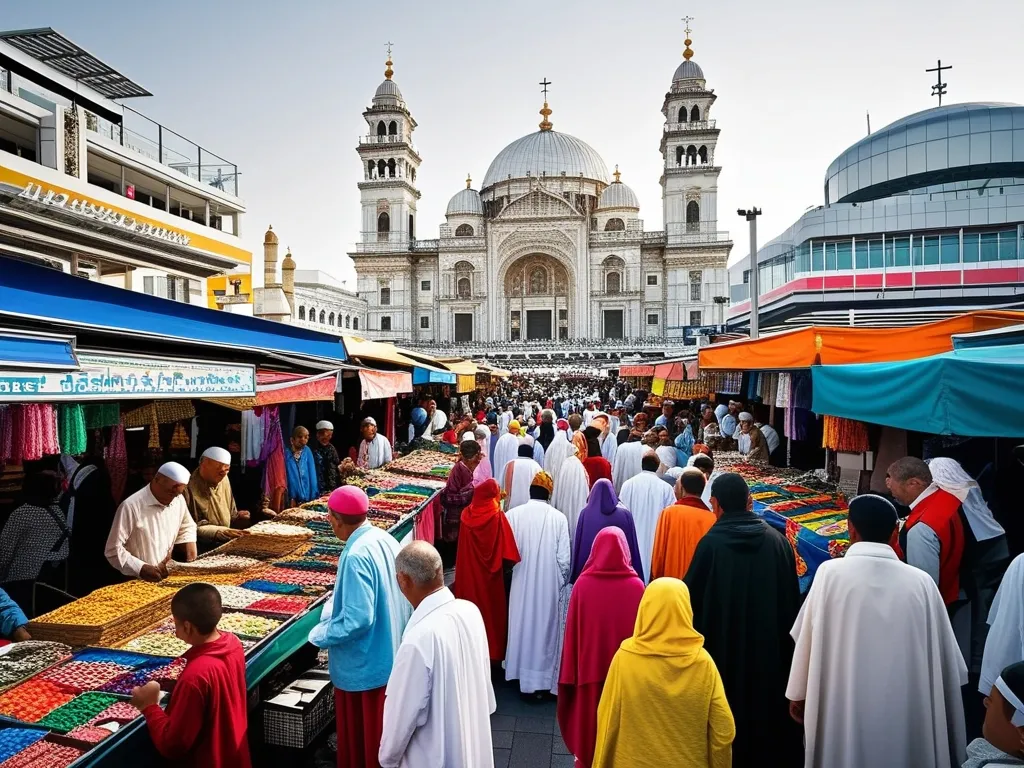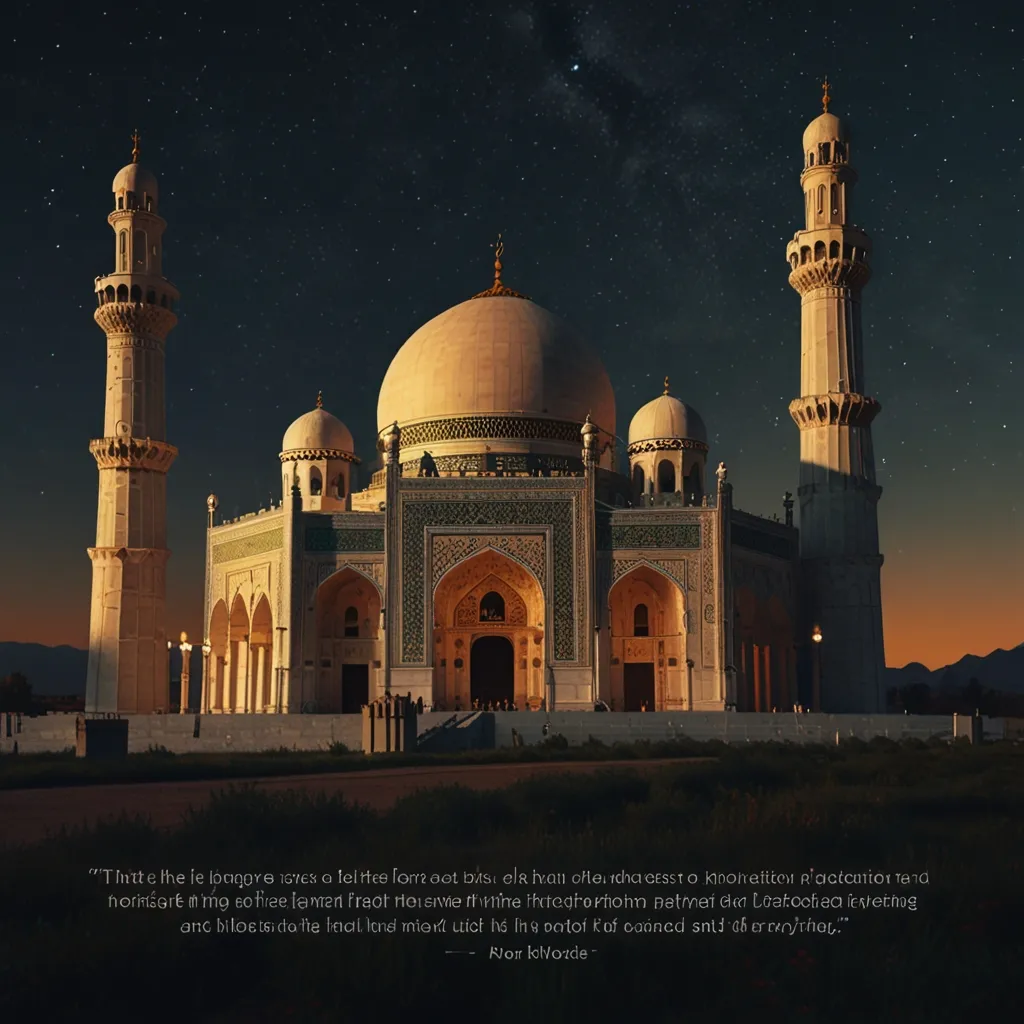As I delve into the world of religious tourism, I am struck by the profound impact it has on local and global economies. Often overlooked, the influx of pilgrims transforms cities into vibrant hubs of commerce, sustaining local businesses and creating a myriad of job opportunities. Let’s embark on a journey to explore how these spiritual journeys, from the Hajj to the Kumbh Mela, stimulate economic growth and cultural vitality.
The Economic Powerhouse of Hajj and Umrah
In Saudi Arabia, the annual Hajj pilgrimage and the year-round Umrah are not just sacred rituals but also significant economic drivers. These events attract millions of Muslims from around the world, generating approximately $12 billion in revenue each year. This figure is a substantial portion of Saudi Arabia’s non-oil revenue, making up about 20% of it and around 7% of the total GDP.
During Hajj, cities like Makkah and Medina become bustling hubs where pilgrims spend money on everything from accommodations and food to souvenirs. Local markets thrive, selling items such as dates, figs, prayer beads, and prayer mats. These transactions support local businesses and create numerous jobs, contributing to the overall economic stability and growth of the region.
Saudi Arabia’s Vision 2030 plan is ambitious, aiming to boost the number of religious tourists. The goal is to welcome 30 million Umrah pilgrims each year, up from the current 7.5 million. To achieve this, the government has invested heavily in infrastructure projects like the expansion of the Grand Mosque in Makkah and the Prophet’s Mosque in Medina, as well as the Haramain High-Speed Rail and a new terminal at King Abdulaziz International Airport.
Beyond Immediate Spending
The benefits of religious tourism extend far beyond the immediate spending of pilgrims. It fosters cultural exchange and goodwill, as people from different backgrounds come together. This can lead to stronger international relationships and new trade opportunities. For instance, the Hajj pilgrimage has been a central practice for Muslims for over 1400 years, providing a steady and reliable source of income for Saudi Arabia and helping its economic stability and growth.
Infrastructure and Job Creation
The development of infrastructure to support religious tourism is a key aspect of economic growth. In Saudi Arabia, for example, the government has invested over $35 billion in improving facilities for pilgrims over the past 30 years. This includes the expansion of mosques, the construction of new hotels, and the enhancement of transportation services. These investments not only accommodate the increasing number of pilgrims but also create job opportunities in various sectors such as hospitality, transportation, and retail.
Cultural and Social Impacts
Religious tourism also has a significant cultural and social impact. In places like Lourdes in France and Assisi in Italy, pilgrimage sites have led to constant population growth and the development of local economies. For example, Lourdes, which receives around 6 million pilgrims per year, has experienced steady population growth since it became a pilgrimage site in 1858. This growth is driven by the creation of jobs in sectors related to tourism, such as souvenir shops, hotels, and travel agencies.
The Case of India and the Kumbh Mela
In India, the Kumbh Mela, one of the largest religious gatherings in the world, showcases the immense economic potential of religious tourism. The Kumbh Mela attracts millions of pilgrims, generating significant revenue from various sources including accommodations, food, and souvenirs. The event also promotes cultural exchange and goodwill among the diverse groups of people who attend.
The economic impact of the Kumbh Mela is substantial, with estimates suggesting that it generates billions of dollars in revenue each time it is held. The event also creates temporary jobs in various sectors, from construction and hospitality to food and beverage services. Additionally, the Kumbh Mela stimulates local economies by promoting the sale of traditional products and services, thereby supporting small businesses and artisans.
The Socio-Economic Dynamics
The socio-economic dynamics of pilgrimage tourism are complex and multifaceted. In many regions, pilgrimage sites are surrounded by businesses that cater specifically to pilgrims, such as souvenir shops, travel agencies, and hospitals. These businesses provide employment opportunities for the local community and contribute to the overall economic development of the region.
For instance, in Galicia, Spain, the pilgrimage to Santiago de Compostela has a significant impact on the local economy. Pilgrims represent a small but significant portion of the total tourist expenditure, and their spending supports various sectors including accommodation, food, and transportation. The economic impact analysis of pilgrimage expenditures in Galicia reveals that even in conservative scenarios, the impact on the local economy is substantial, contributing to gross value added and employment.
Personal Touches and Local Stories
As I reflect on my own experiences with religious tourism, I recall the vibrant bazaars and serene sanctuaries that come alive with pilgrims. In Makkah, I saw how local vendors thrived during the Hajj season, selling everything from traditional clothing to sacred water. The atmosphere was electric, with people from all over the world coming together in a shared spirit of devotion.
In India, during the Kumbh Mela, I witnessed how local artisans and small businesses benefited from the influx of pilgrims. The event was a celebration not just of spirituality but also of cultural heritage and economic resilience. The temporary city that sprang up along the banks of the Ganges River was a testament to the power of religious tourism to transform local economies.
Looking Ahead
As we look to the future, it is clear that religious tourism will continue to play a vital role in the economic development of many regions. Saudi Arabia’s Vision 2030 plan is just one example of how governments are investing in infrastructure and services to support religious tourism. The goal is not just to attract more pilgrims but also to diversify the economy and reduce reliance on finite resources like oil.
In conclusion, the economic impact of religious tourism is a story of transformation and growth. From the bustling streets of Makkah to the serene banks of the Ganges, pilgrimage sites around the world are hubs of commerce and cultural exchange. As we navigate the complex web of vendors, hospitality services, and cultural exchanges, it becomes clear that these spiritual journeys are not just about devotion but also about economic development and community resilience. Whether you are a pilgrim or simply an observer, the world of religious tourism is a fascinating and dynamic place where spirituality and enterprise walk hand in hand.






